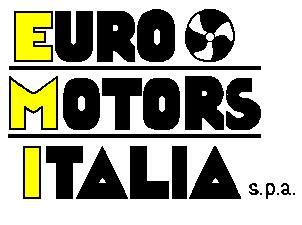Главный офис
в центре Европы
Гарантия
до 24 мес
до 24 мес
Лучшие
цены
цены
Экономия
от 15 до 55%
от 15 до 55%
Доставка
по России
по России
Все грузы
застрахованы
застрахованы
Бесплатная
доставка
доставка

Alfa Laval PreBilge
Категория - Сепараторы дисковые и центробежные
Официальный сайт Alfa Laval (Швеция) :
www.alfalaval.com
Узнать цену
В нашей компании вы можете выбрать и купить Alfa Laval PreBilge, а также другие запчасти от
компании Alfa Laval с доставкой по всей России, в том числе в ваш город : Дублин. Для запроса цен, сроков поставки
и других характеристик продукции Alfa Laval, пожалуйста, заполните форму обратной связи или пришлите описание необходимых Вам наименований
на электронный адрес info@famaga.ru
Описание
Продукция, изготовленная шведской Alfa Laval компанией, подходит для использования в пищевой, химической, фармацевтической, горнообрабатывающей и нефтяной промышленности.Преимуществом товара является длительный срок службы без необходимости осуществления регулярного обслуживания, а также его первоклассное качество и надежность. This compact centrifugal separator cleans bilge water feed before it enters the existing bilge water treatment system onboard. This ensures compliance with international oil pollution prevention regulations for safe discharge overboard. Cost-effective bilge water treatment An economical and reliable alternative to installing a new bilge water treatment system, Alfa Laval PreBilge is cost-effective solution for upgrading ship bilge water treatment systems that do not currently meet, or have high operating costs in order to meet, international performance standards. Using proven centrifugal separation technology, PreBilge oily water separator effectively cleans bilge water feed before it enters the existing bilge water treatment system, whether a gravitational coalescer or another type of system. This ensures that cleaned bilge water discharged overboard by the existing bilge water system meets international regulations for an oil-in-water content of between 5 and15 ppm – even when the ship is subject to unfavourable roll, pitch and heave motions at sea. Continuous oily bilge water pre-treatment Installed as a pre-treatment loop, PreBilge runs continuously, providing the existing system with clean, problem-free feed. There is no need for the crew to monitor treatment, investigate oil-in-water alarms or change filters. Compact, convenient installation Easy to install, this compact oily water separator can be positioned anywhere in the engine room. Pipe connections can be drawn as needed so proximity to the vessel’s bilge water tank is not required. Economical bilge water treatment Since the discharge and oil monitoring are handled by the existing system, PreBilge does not require its own type approval or affect the vessel’s IOPP certificate. It ensures regulatory compliance and reduces operating costs while maximizing uptime with minimal effort and no change to the vessel’s paperwork. System components The Alfa Laval PreBilge is supplied as a skid-mounted module consisting of a high-speed BWPX 303 disc-stack centrifuge with feed strainer, heater and sample valves and a progressive-cavity feed pump. It includes an integrated electrical system with starter and a fully automatic control system, the EPC 60. Operating principle The Alfa Laval PreBilge is installed as a continuous pre-treatment loop, starting and ending at the bilge water tank. Bilge water is drawn from the bilge water tank and fed into the disc-stack centrifuge. The bilge water to be separated enters the centrifuge inlet and gradually accelerates as it moves upward to the disc stack, where the separation of water, particles and oil droplets takes place in the rotating centrifuge bowl at a gravitational force of 6000 G. The clean bilge water leaves through the outlet at the top of the bowl. The separated oil, if any, is continuously pumped to the sludge tank. During normal production the operating water keeps the sliding bowl bottom closed against the bowl hood. During discharge the sliding bowl bottom drops for a short time (less than a second) and the solids are ejected through the discharge ports. The pre-cleaned bilge water is returned to the bilge water tank and fed, in turn, into the existing bilge water treatment system for oil-in-water monitoring and subsequent discharge into international waters. Since the oil monitoring and overboard discharge are handled by the existing treatment system, no type approval or adjustment to the vessel’s IOPP certificate is required. Capacity and range PreBilge has a capacity of 500 l/h and is available in these configurations:- 230V, 380V, 400V, 415V (50 Hz)
- 230V 440V, 575V, 690V (60 Hz)
- Steam heater
- Electric heater
- Plate heat exchanger
- No heater, if heating is done by external heater
Пригласить на тендер
Наш менеджер свяжется с вами в ближайшее время.
Запрос отправлен
Запрос отправлен
Письмо не отправилось
Письмо не отправилось
Оставьте заявку
Мы свяжемся с вами и ответим на любой возникший вопрос.
Запрос отправлен
Запрос отправлен
Письмо не отправилось
Письмо не отправилось
Заказать звонок
Мы ответим на любые вопросы и поможем оформить заказ
Спасибо за вашу заявку!
А пока мы обрабатываем ваш запрос, вы можете найти другие необходимые вам позиции - ведь в нашем каталоге более 10 000 брендов!
Заказывая у нас сразу несколько позиций вы существенно экономите на доставке!
Каталог производителей
Искать

Что-то пошло не так
Кажется, что-то пошло не так. Попробуйте повторить попытку ещё раз позже.






















